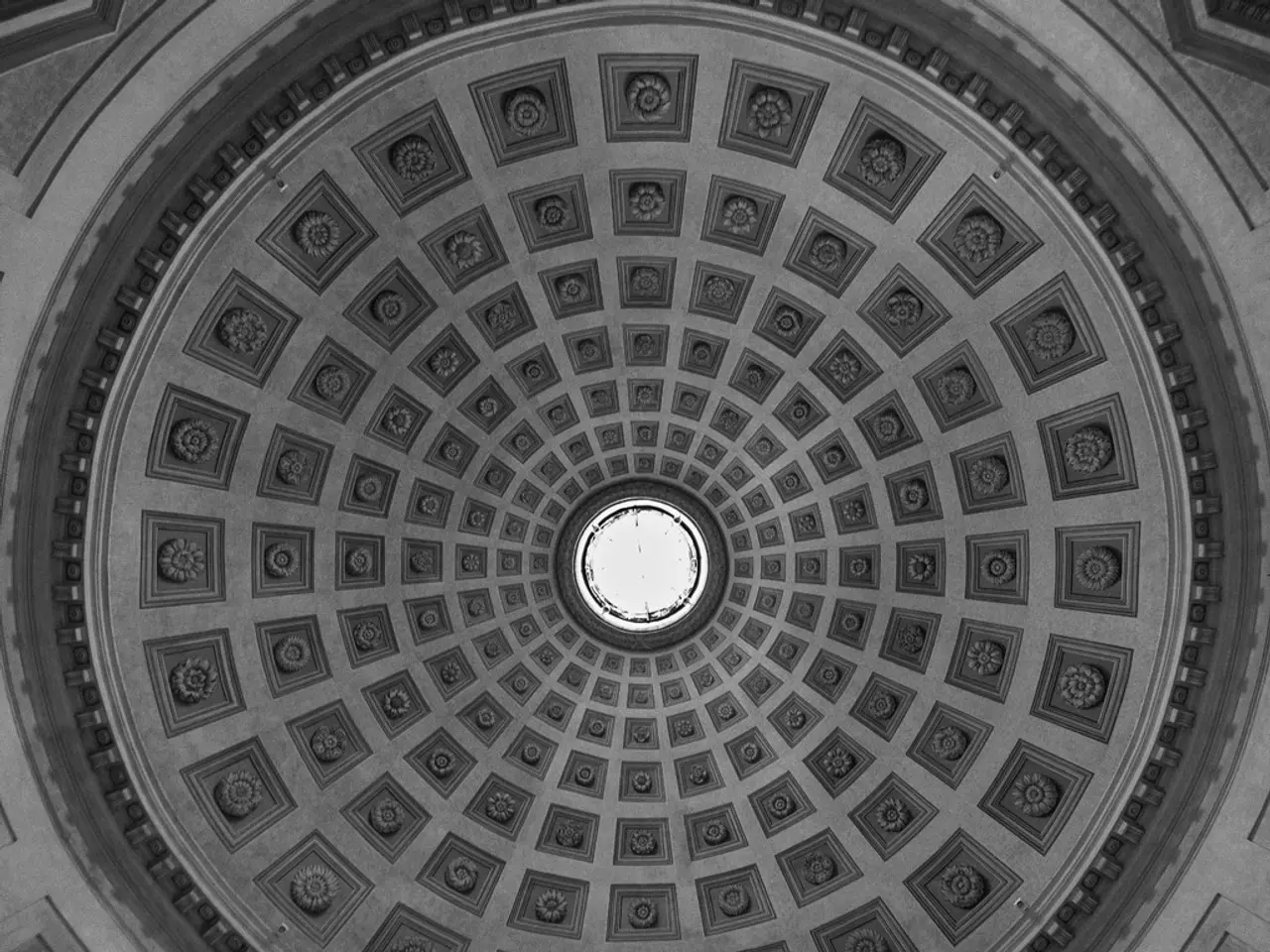Transforming Modern Constructions with Intelligent Roofing Technology: Innovations that Efficiently Conserve Energy
In the realm of modern construction, innovation is taking roofing to new heights. Self-healing roofing membranes, a cutting-edge development in materials science, are set to revolutionise the industry by allowing roofs to repair minor damages autonomously, significantly extending their functional lifespan and reducing maintenance needs.
These advanced membranes leverage thermoplastic polymers and flexible bituminous materials that enable them to repair small-scale damage such as scratches, punctures, or minor tears, without human intervention. Thermoplastic polymers in shingles or membranes break and reform bonds upon heating and cooling cycles, automatically sealing small damages. Flexible bituminous materials maintain elasticity and can close up minor punctures or cracks, restoring waterproofing.
Compared to traditional roofing materials, self-healing membranes offer numerous advantages. For instance, they require fewer repairs due to their autonomous damage repair capabilities, leading to lower maintenance costs. Their extended lifespan is a result of reduced damage accumulation, making them more durable and resistant to environmental stresses like UV light, punctures, and temperature fluctuations.
Modern membranes are often lighter, thinner, and easier to install than traditional roofing materials, requiring less labour. Some synthetic membranes also reflect sunlight, improving cooling efficiency, and are available in eco-friendly options made from recycled materials.
However, it is crucial to note that self-healing membranes do not prevent major damage or replace the need for quality installation and occasional maintenance. They serve as an exciting advancement to slow down typical wear and tear in roofing systems.
The hi-tech roofing systems of the future are not just self-healing; they are also energy-efficient and intelligent. Solar tiles feature micro-inverter systems, weather-resistant coatings, smart monitoring capabilities, and aesthetic designs that match traditional roofing materials. Advanced ventilation systems optimise airflow through automated monitoring and adjustment of roof components. Motorized exhaust fans coordinate with indoor air quality monitors, while IoT-enabled ridge vents adjust opening sizes based on humidity levels.
Solar-powered ventilation pods activate during peak temperature periods, while smart temperature control systems utilise thermal sensors, adaptive materials, and integrated heating elements to regulate indoor climate. Innovations such as thermochromic materials, which change colour based on temperature, reflect excess heat during summer months while absorbing warmth in winter, further contribute to energy efficiency.
Moisture detection units trigger ventilation responses to prevent condensation, and smart soffit systems with pressure sensors balance air intake. These integrated systems not only protect homes but also generate clean energy, with integrated solar technologies like photovoltaic tiles producing 5-7 kWh per square meter daily.
The average payback period for these hi-tech roofing systems ranges from 5-7 years, with continued savings thereafter. Solar-reflection can reduce cooling costs by up to 30%, making these advanced roofing solutions a financially viable and environmentally friendly choice for the future of housing.
- The integration of predictive maintenance technology in hi-tech roofing systems allows for efficient monitoring and repair, further reducing maintenance needs.
- Techno-savvy homes are embracing renewable-energy trends, as smart-home devices like self-healing roofs and gadgets such as solar tiles generate clean energy for domestic use.
- Aside from their self-healing properties, these hi-tech roofing systems demonstrate high-tech intelligence through features like smart temperature control systems and IoT-enabled ventilation.
- By utilizing photovoltaic tiles, these advanced roofing solutions not only provide energy efficiency but also contribute to renewable-energy production with a daily output of 5-7 kWh per square meter.
- Finance-savvy homeowners are recognizing the long-term benefits of these hi-tech roofing solutions, with an average payback period of 5-7 years and continued savings thereafter.
- The innovative use of materials like thermochromic materials in roofing contributes to energy efficiency by modifying heat absorption properties based on seasonal changes.




